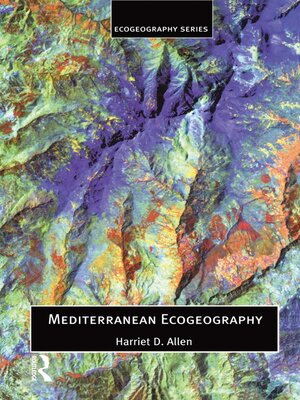
Sign up to save your library
With an OverDrive account, you can save your favorite libraries for at-a-glance information about availability. Find out more about OverDrive accounts.
Find this title in Libby, the library reading app by OverDrive.



Search for a digital library with this title
Title found at these libraries:
| Library Name | Distance |
|---|---|
| Loading... |
A core textbook series that aims to provide students with accessible, up-to-date accounts of Ecogeography - the marriage of ecology with geography - in the primary terrestrial and marine environments. This is the first book in the series on Mediterranean Ecogeography. Biological diversity in the Mediterranean Basin is amongst the highest of any region on earth, both in terms of total species numbers and endemism. The flora is estimated at about 25,000 species of flowering plants and ferns, compared with about 6000 species in non-Mediterranean Europe. About 50% of these are endemic. Diversity amongst vertebrate animals is also high, though endemism rates are lower than for plants. The high levels of diversity contribute to, and are a reflection of, the considerable variability of landscape. This results from a combination of factors including geological and tectonic history, relief and physiography, climate, geomorphological processes, hydrology, soils, the incidence of fires and impact of human activities. The landscapes of the Mediterranean Basin are thus varied and fragmented; a mosaic of ecosystems and communities. MediterraneanEcogeography aims to examine and explain this heterogeneity, and the approach is focused on the ecogeography of the region. Analysing the factors which account for the present distributions of plants and animals, and the functioning of ecosystems within the Mediterranean Basin can help in the understanding of the relationship between people and natural ecosystems. A key to the conservation of these ecosystems is the wise use of resources, biological and physical. In addition, it is vital to assess how the natural environments of the region will respond to further change. In the last twenty years, understanding of the functioning of mediterranean-type ecosystems has advanced through several international projects. This book draws upon the findings of these, and other research in the Mediterranean Basin, to present a comprehensive text on a key region of the world, and the problems and prospects of its environmental exploitation.







